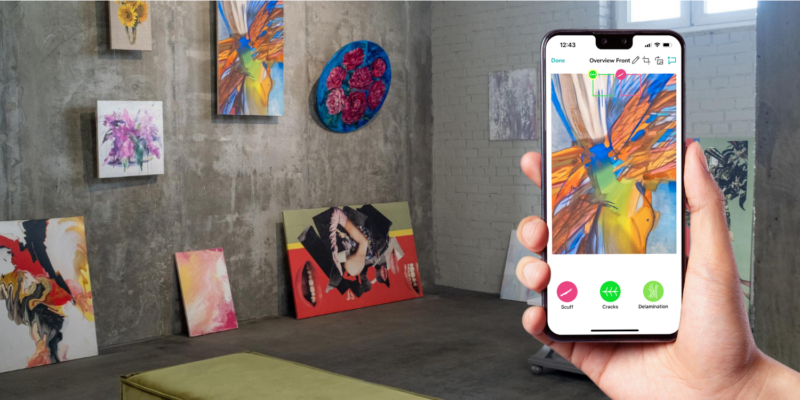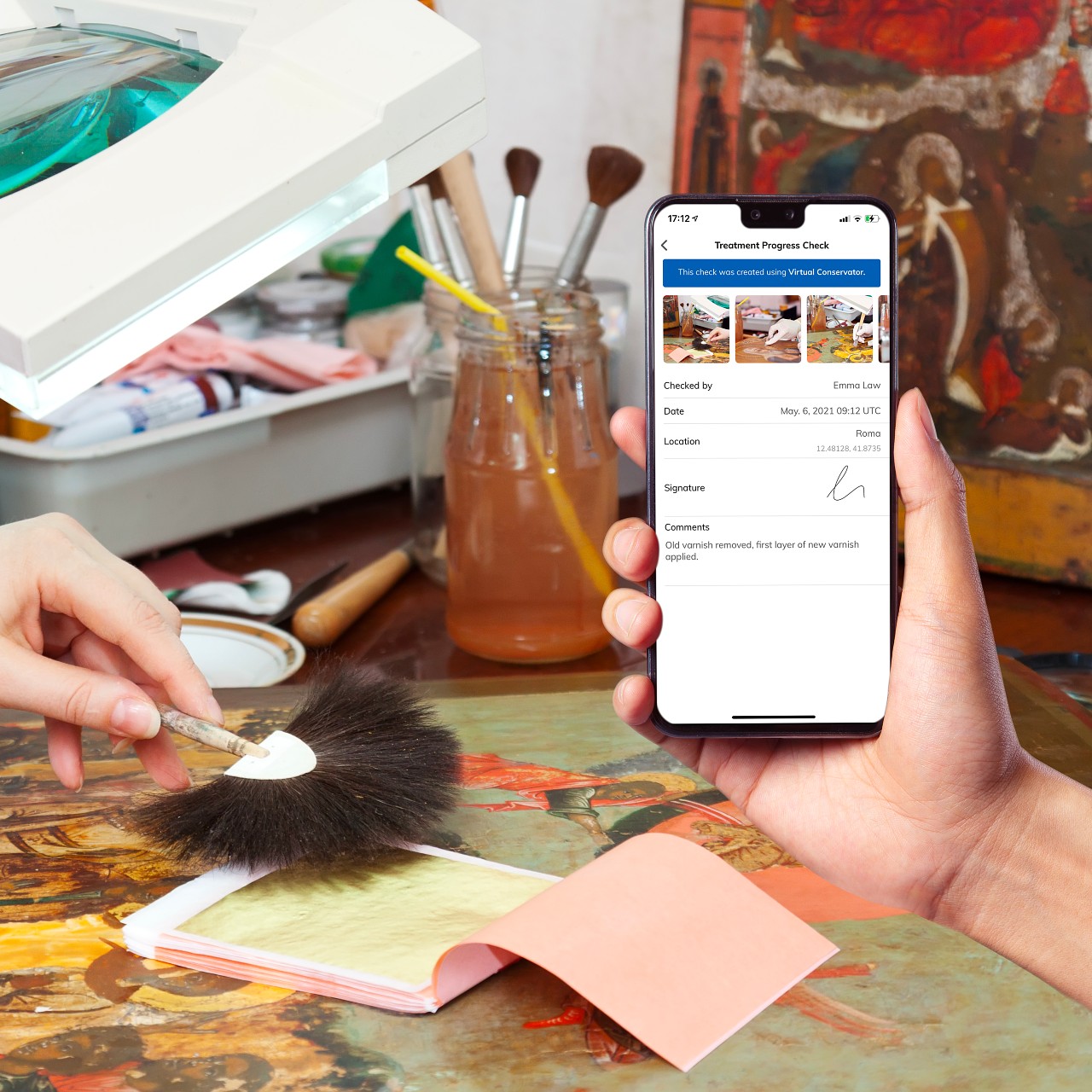Articheck is an application for art and heritage institutions, museums, galleries, collectors, and art shippers that provides an integrated system for generating condition reports for artworks and managing collections. The company's CEO, Annika Erikson, spoke with Fine Art Shippers about how the service works, how cultural organizations and art industry professionals can benefit, and why cloud-based systems for managing collections are more secure than in-house servers.
Articheck: An App for Easy and Secure Collection Management
Articheck is intended for institutions such as museums and galleries, conservators, and art shippers. How does the service differ for each type of user?
Annika Erikson: We try to have a uniform and standardized product offering, because the goal of Articheck is to create an international industry standard. During the lifecycle of a condition report, it can go through many hands of different categories. The first report may be created in an artist's studio. Then a shipper who picks up the artwork prepares the next report before transporting it to a gallery, where the first official report is made. As a rule, the shipper's reports are faster and less detailed than, for example, the museum reports.
To compensate for these differences, we have modular templates in the system. Thus for paintings, there is a simple, standard, and detailed template type. A shipper can choose the simple template. If you are a gallery, you choose either the simple or the standard template. And if you are a museum, you choose either the standard or the detailed template. We also offer different options for different types of projects. For example, if you are doing an inventory of the entire museum collection with thousands of works, you may have only one minute for each object. In this case, the basic template would be helpful. But for a significant, high-value acquisition, it is important to create a detailed report for this specific purpose.
Since we serve the entire ecosystem with our product, we make it beneficial for everyone. Articheck features include multiple permission levels, video reporting, photo and video checks, and offline functionality. We can also customize and specialize our product for a specific organization. This is especially important for large institutions with multiple sites.
Data protection is one of the main concerns when it comes to cloud solutions. How do you address this issue? What security features does Articheck have?
Security is one of our main priorities and something we want to communicate to the arts industry as a key issue. Unfortunately, the arts and cultural heritage sector lags behind in technology adoption. Also, awareness of cybersecurity is often very low, and that's something we help to better understand through our educational work.
As for Articheck, we use Amazon Web Services (AWS) as our cloud provider, the industry leader in security protocols that meets all government and other certifications. The security measures we put in place include two-factor authentication and encryption of data transferred from the local device to the server.
We always advise our clients to share reports only between authorized users of the platform, as this is the key to data security. While it is still possible to export a PDF file and send it via email, we strongly discourage that. Email was never intended to be a secure means of transmitting data. Besides, anyone can edit a pdf file, after you've sent it to them, and forward it to others. Cultural organizations really need to think about this and put better policies and procedures in place for sharing sensitive data. The current standards in the industry entail a lot of cybersecurity issues, and that situation needs to change.
Articheck has integrations with all CMS and databases. How does it work in practice?
Another important cybersecurity concept we are promoting is the use of cloud-based services. Many arts organizations tend to think that storing data on their own servers is more secure. However, this is only true if the servers are professionally maintained and backed up, which is not the case for most cultural institutions. For this reason, many of them are attacked and breached. Outsourcing this task to a third-party provider and using browser-based collection management systems is a much more secure option. Another advantage of cloud-based collection management systems is that they integrate more easily with other tools, including API and CSV. But for those who still rely on their own servers, we also offer the possibility to import and export Excel spreadsheets. For example, if you can not do API integration, you can export all objects from your collection management system and upload them through our CSV importer. Another important integration feature is a permanent link to the export that points back to the object in the system and the last update of the condition report.

Articheck partners with several organizations. How does that enhance your business?
The Art Innovators Alliance is an alliance of which I am a founding member. It consists of several innovative art technology companies such as Arteia, Authentify, Art Money, and ARTA. For us, the Art Alliance is a tool to enhance our marketing efforts and get our message out. Another organization I belong to is Art Identification Standard. It is a blockchain consortium that includes tech companies, attorneys, and consultants. The idea is to create a new foundation for the sharing economy. And one of the tools in doing that is to create a unique blockchain identifier for each cultural asset, similar to an ISBN in publishing.
It is valuable for both logistics and transactions. For example: let’s say I am a private collector who sees a piece of art to be auctioned at Sotheby's next month. If I have such a number, I'll do a search and find a dozen different content providers around that object. There is probably a free data tier, a payment gateway, and a private data tier. At each level, you can see certain details. Say, at the free level you can see that the object was exhibited at an important museum 10 years ago and sold at Christie's 5 years later. If you want to know the price, see the exhibition catalog and condition report, you need to go to the next level, which is available for a fee. There are several possible scenarios for a given object, but the most important thing is that you have a central database with meaningful information. The art market today is fragmented, and in the new realities of e-commerce, this is a serious disadvantage. For the art industry to thrive, we need symmetrical data available to buyers and sellers alike. The condition report could be the foundation for this system.
Photo courtesy of Articheck
